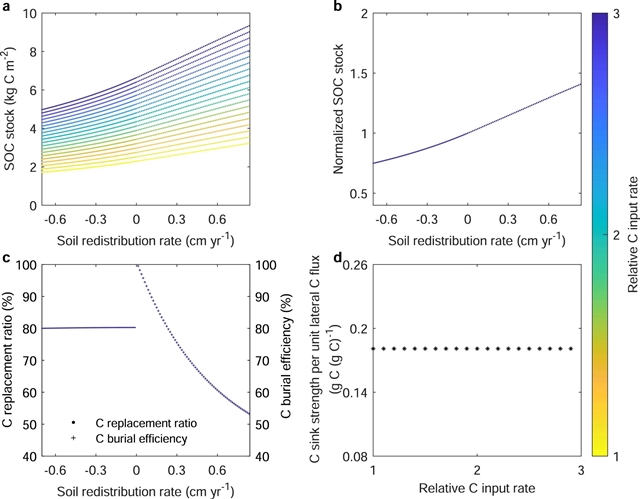
研究团队利用不同气候流域的137Cs和土壤有机碳清单,研究发现随着温度的升高,分解速率可以有效地替代侵蚀地区因侵蚀而侧向损失的有机碳,但沉积地区沉积的有机碳保存较低。当与景观水平结合时,侵蚀引起的每单位横向有机碳通量碳汇强度随着温度的升高而增加,从0°C时的0.19 g C(g C)-1增加到25°C时的0.24 gC(g C)-1。该研究团队估计,由于气候变化,农田水蚀导致的0.050 Pg C yr-1的全球碳汇增加了7%。研究结果揭示了气候变化和侵蚀引起有机碳循环扰动之间的负反馈循环。
据介绍,侵蚀对土壤有机碳(SOC)有控制作用,侵蚀和有机碳都受到气候的影响。温度在多大程度上控制这些侵蚀-碳相互作用之间的耦合仍然不清楚。
附:英文原文
Title: Temperature effect on erosion-induced disturbances to soil organic carbon cycling
Author: Wang, Zhengang, Zhang, Yizhe, Govers, Gerard, Tang, Guoping, Quine, Timothy A., Qiu, Jianxiu, Navas, Ana, Fang, Haiyan, Tan, Qian, Van Oost, Kristof
Issue&Volume: 2023-01-30
Abstract: Erosion exerts control on soil organic carbon (SOC) and both erosion and SOC are affected by climate. To what extent temperature controls the coupling between these erosion–C interactions remains unclear. Using 137Cs and SOC inventories from catchments spanning different climates, we find that increasing decomposition rates with temperature result in the efficient replacement of SOC laterally lost by erosion in eroding areas but lower preservation of deposited SOC in depositional areas. When combined at the landscape level, the erosion-induced C sink strength per unit lateral SOC flux increases with temperature from 0.19gC(gC)-1 at 0°C to 0.24gC(gC)-1 at 25°C. We estimated that the global C sink of 0.050PgCyr-1 induced by water erosion on croplands increases by 7% because of climate change. Our results reveal a negative feedback loop between climate change and erosion-induced disturbance to SOC cycling.
DOI: 10.1038/s41558-022-01562-8
Source: https://www.nature.com/articles/s41558-022-01562-8
